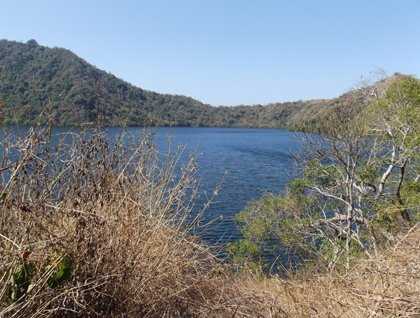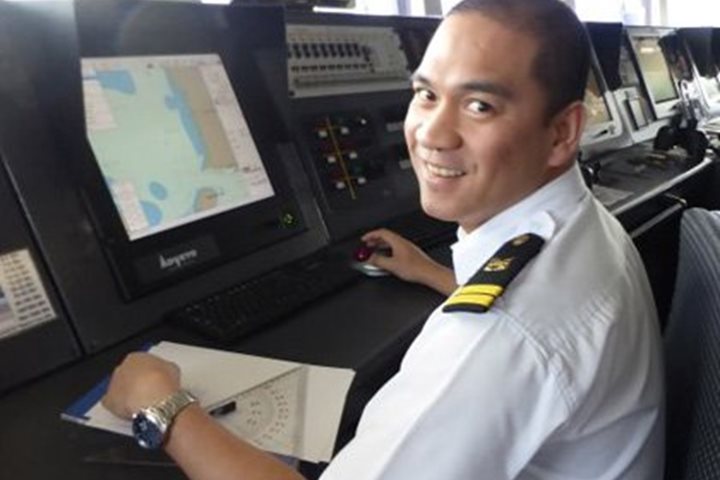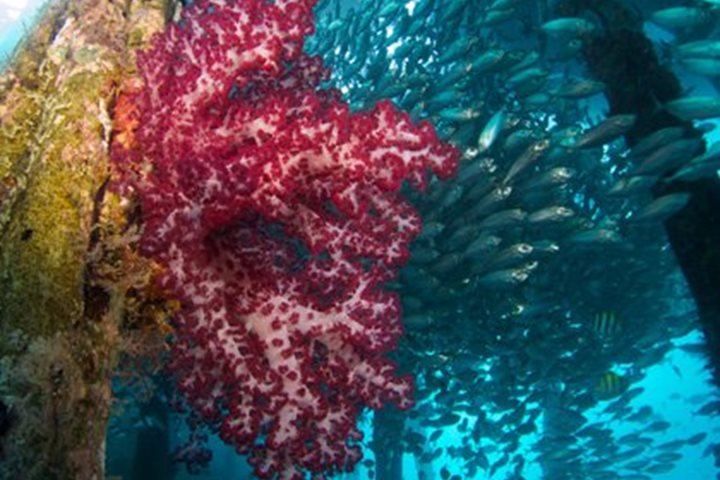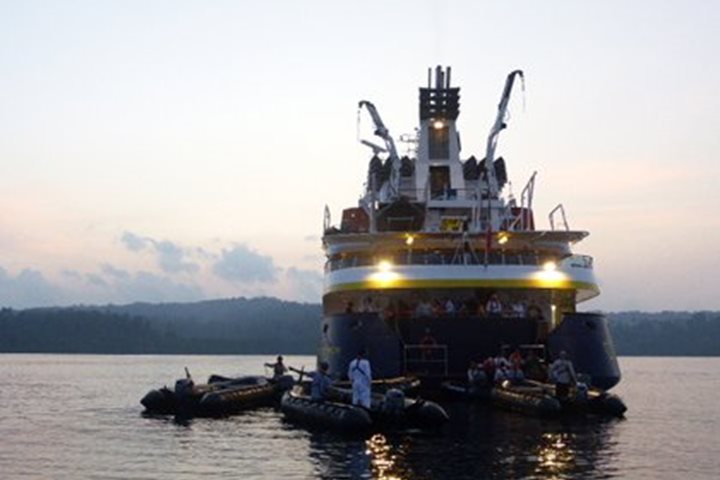From the time we departed Borneo a day and a half ago, we have made exceptional speed. This gave us a little extra time to play with and we decided to take advantage of this with an expedition stop in the Lesser Sunda Archipelago. Just off the north coast of Sumbawa Island is a small, flooded collapsed caldera known as Satonda Island. The two islands are connected through their geology. Sumbawa loomed in the distance, with its impressive cloud-covered mountainous Tambora Volcano dominating the horizon. Tambora Volcano is only one among nearly 80 active volcanoes in Indonesia, but in 1815, it produced a massive, long‑lived eruption, which was, and still is, the largest volcanic eruption in recorded history. So much ash was put into the atmosphere, it significantly reduced the amount of the sun’s radiant energy received on the earth’s surface and caused a mini ice age. Crops failed in many areas of northern Europe that year, and it was called the Year of No Summer. The island of Sumbawa was covered with a thick layer of ash which devastated all life there. It is estimated as many as 100,000 people died on Sumbawa and the surrounding islands. At the same time, the magma chamber of Satonda Volcano, located just a few miles away, receded and the overlying peak collapsed into the void. This event formed the water-filled 800-foot (240-meter) deep caldera we see today.
Satonda proved to be the perfect island for an afternoon stop. Upon arrival, our floating snorkel platform was set up over a beautiful section of coral reef located just offshore the island. There were plenty of reef fishes, but the closeness of the village across the strait on Sumbawa Island probably had something to do with the lack of larger fishes, such as groupers and snappers that one would expect here.
Traditionally, this has been considered a sacred island by Animistic people from long ago. Nowadays, the people living in the vicinity are mostly Muslims, so it may have lost some of its sacredness in recent years. A small resort was recently built near the lowest section of the rim, where one has the easiest approach to the interior brackish water lake. Nevertheless, we witnessed that people still come here to hang small rocks and pieces of coral with string on the low branches of trees growing near the lake’s edge. These are prayer offerings to give aid to friends and loved ones, and perhaps oneself, who may need help in various ways. We found a rather daunting rim trail, which in the heat of the afternoon did not entice too many people to go very far, but it gave nice views down into the crater lake. On the interior slope leading down to the crater lake is a magnificent banyan tree overlooking the shore that once was believed to be the most sacred tree of the island. Inside the crater lake we encountered a traditional double outrigger dugout canoe tied to the shore. Several of us agreed we would love to have this beautiful work of art at home on our own lakes. Many of us took a walk along the outside ocean shoreline and were rewarded with many interesting observations of flotsam and jetsam, including pumice rocks that floated in from some volcanic eruption (perhaps Krakatoa), black basaltic boulders, sea shells, pieces of coral (including beautiful chunks of red pipe organ coral), long-tailed macaques, ghost crabs and hermit crabs, and various coastal trees, vines, and many rather dried-out plants.
After we sailed in the early evening, everyone was invited to the upper deck for a cocktail party complete with fresh coconuts and views of Sumbawa Island and its scary Tambora Volcano now mostly exposed by the retreating clouds.







